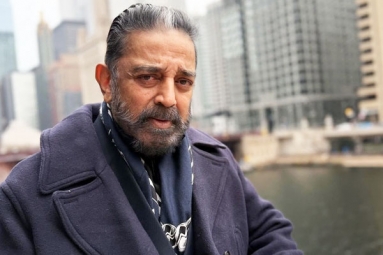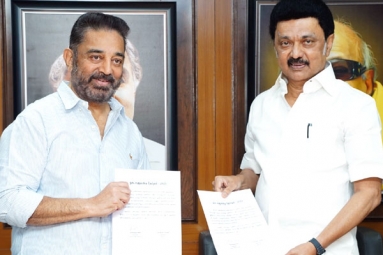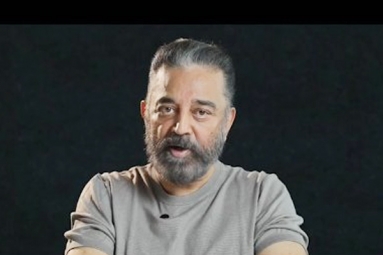
(Image source from: x.com/RKFI)
"Thug Life" stands out as a remarkable and ambitious partnership in Indian cinema, reuniting Kamal Haasan and Mani Ratnam after nearly forty years. This film delves into a gangster narrative that promises a grand examination of themes such as violence, betrayal, and the intricacies of the underworld. The teaser stirred excitement, reminding audiences of Mani Ratnam’s iconic films like "Nayakan" and "Chekka Chivantha Vaanam". With a strong ensemble featuring Silambarasan TR, Trisha, Joju George, and music composed by AR Rahman, hopes for the film were exceptionally high. Yet, as the credits rolled, one lingering question emerged: what went awry with a project that appeared so promising?
"Thug Life" narrates the tale of Rangaraya Sakthivel, an aging gangster on a quest for revenge against those who have deceived him, including his brother and gang affiliates, particularly Amar, portrayed by Silambarasan, who is both his right-hand man and adopted son. The film also delves into themes of distrust and power dynamics, as Sakthivel is prepared to eliminate anyone he suspects could jeopardize his position. Additionally, a morally ambiguous subplot unfolds regarding Sakthivel's affair with Indrani, played by Trisha Krishnan, who is a social media influencer. He frivolously dismisses his infidelity as merely his "disorder."
At its core, "Thug Life" boasts an array of ideas: aspiring to present a dark and psychologically charged crime drama reminiscent of "Nayakan". However, it struggles with an overabundance of themes. Multiple subplots vie for attention, leaving characters feeling underdeveloped and sequences feeling hurried. While "Nayakan" adeptly balanced intricate storylines with a natural progression and emotional richness, "Thug Life" falls short in these crucial areas. It resembles a concluding chapter of a franchise film, crammed with numerous characters and motives, but lacking the context of earlier installments to justify this climactic encounter.
A noteworthy disappointment is the absence of explicit motivations, which is surprising given Mani Ratnam's reputation for creating emotionally complex characters. For example, as Sakthivel prepares for prison, he designates Amar as his successor, who later claims his identity as the next Rangaraya Sakthivel. Moreover, a secret surrounding the murder of Amar's father complicates his relationship with Sakthivel. What qualifies Amar as a leader? What does he bring to the group? The film provides no satisfactory explanations. If the gangsters' own actions are murky, it is unreasonable to anticipate a well-articulated motivation for Amar.
Indrani, played by Trisha, represents another lost opportunity. Following her nuanced portrayal of Kundavai in the "Ponniyin Selvan" series, here she comes across as unclear and superficial. Is she a lover, a source of inspiration, or merely a distraction? The film fails to grant her the necessary depth or clarity. With more thorough writing, she could have effectively navigated the evolving dynamics between Amar and Sakthivel, similar to Nandini’s role in "Ponniyin Selvan".
Silambarasan’s portrayal of Amar lacks a distinctive personality or emotional foundation. His decisions seem spontaneous without generating intrigue. If his uncertainty was meant to depict an internal struggle, it could have succeeded, but ultimately it feels like the film itself does not understand his character. Consequently, pivotal moments such as Amar's betrayal and Sakthivel's quest for vengeance lack the emotional weight they should carry.
Among the extensive ensemble, the character Inspector Jai Royappa, portrayed by Ashok Selvan, stands out with notable emotional depth. His intentions are well-defined, and his backstory is sufficiently developed to draw the audience in. However, even he cannot salvage a film where numerous characters seem underdeveloped and lacking in direction.
Mani Ratnam is renowned for his ability to tell stories visually. Memorable moments, such as the sunlit scene in ‘Thalapathi’ or Shaila’s reveal of her pregnancy in 'Bombay', convey substantial meaning without dialogue. In contrast, ‘Thug Life’ relies heavily on exposition. Crucial plot points, including Amar’s ascension, Sakthivel’s transformation during exile, the disintegration of the gang, and the fate of Jeeva, Sakthivel’s spouse, are conveyed through hurried conversations and montages. Rather than infusing these pivotal events with emotional resonance, the film informs viewers of the occurrences without evoking genuine feelings.
For instance, while Amar is said to have revamped the gang's operations within two years, the specifics of his actions remain vague. What changes occurred during Sakthivel’s absence? How does Amar’s rise align with Sakthivel’s diminishing influence? These elements are merely spoken of, not depicted. The narrative appears fragmented, as significant events are narrated rather than experienced. A key reason behind the mixed reactions to ‘Thug Life’ is its marketing strategy. Positioned as Kamal Haasan’s triumphant return to the gangster genre—with strong references to ‘Nayakan’ reflected in character names and interviews where both Kamal and Mani Ratnam mentioned their earlier works’ emotional and cinematic impact—expectations soared. An atmosphere was established for a rich character-driven drama filled with tragedy and tension.
Nevertheless, ‘Thug Life’ heavily draws from the aesthetic qualities of those classic films without capturing their emotional essence. Although the title, mood, and visuals imply profound depth, the world it creates lacks genuine stakes. The end result is a gangster narrative devoid of real peril, a father-son conflict lacking emotional depth, and a betrayal that feels insincere. Technically, the film is impressive, yet this visual appeal often feels detached from the narrative. At times, the music, crafted by AR Rahman, overshadows rather than enhances pivotal emotional moments. The expectations generated by its heritage and promotional efforts established such a high standard that the film faced challenges in living up to them.
‘Thug Life’ showcases its strengths. There are instances where the film excels, particularly in the portrayals of Sakthivel and Amar, and the early interactions between them display the hallmark talent of Mani Ratnam and Kamal Haasan. However, instead of capitalizing on these strengths, the film frequently opts for style over substance. It is not a poor film, but rather one that feels caught in limbo, struggling to pay homage to its predecessors while seeking an original identity. This unresolved conflict leads to a sense of detachment when the film should have been deeply compelling.





















